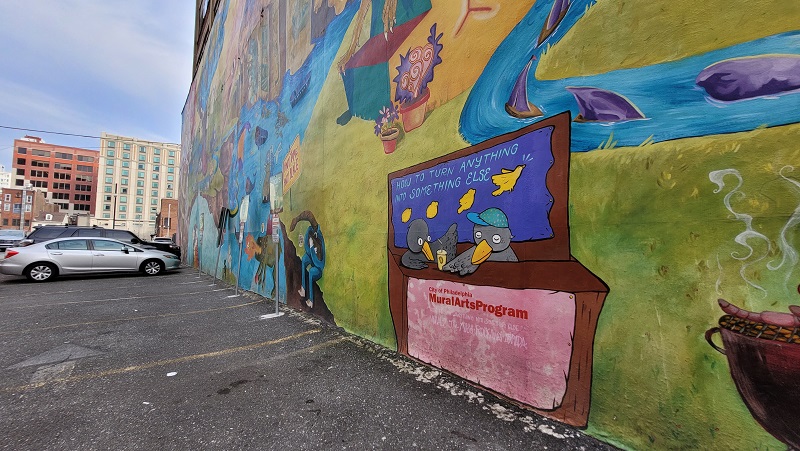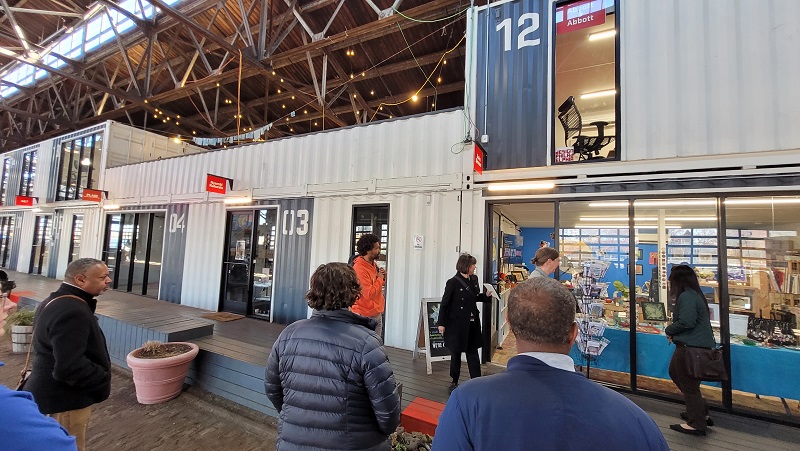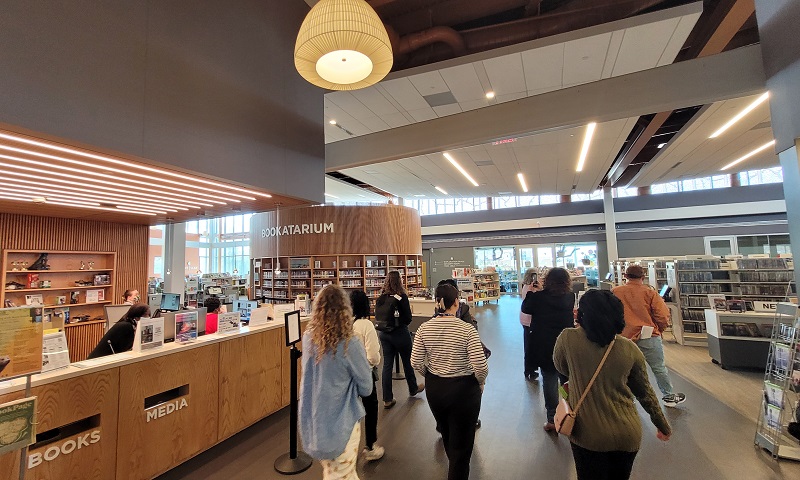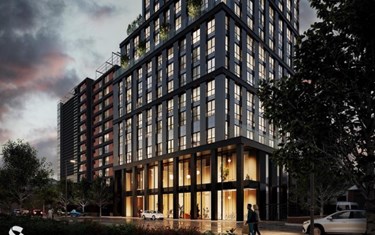Simeon Shtebunaev is the RTPI's Young Planner of the Year
Early in April, the American Planning Association National Planning Conference 23 took place in Philadelphia, Pennsylvania. On the way to the airport, my interest in Philly was peaked, listening to the American Planning Association’s latest podcast, covering the Mural Arts Programme in Philadelphia. Created by Jane Golden the programme engages local communities in the production of murals across the city. For more than three decades around 50 to 100 public arts projects have been produced annually. The programme features in the city’s budget for 2023-27 as a low-barrier employment programme. It showed a much more sophisticated understanding of art’s ability to economically empower residents and to channel funding into local cultural ecosystems, in stark contrast to the outsourcing approach in the UK. From the airport to the hotel, murals grace gable walls across the city at every corner.

One of Philadelphia's art murals
I must declare a conflict of interest - the month before the Covid pandemic broke, I joined the West Midlands Cultural Leadership Board as a chair of the sub-group dealing with cultural infrastructure and investment. It's an arts-led body convened by the Mayor, and my fellow board members run arts and cultural organisations. In the past year we have been building an alliance between developers, investors and planners to understand how to better integrate culture in the policy realm. Some of the forthcoming research we will publish will shine a light on the lack of policies in the Local Plans of the region acknowledging, encouraging and protecting cultural developments and ecosystems.
Imagine my surprise when, on an early Sunday morning, in an American convention centre room, I was surrounded by hundreds of planners from across the world, listening to a presentation outlining the system of cultural and arts planning we were only just starting to dream about in the West Midlands. The Metropolitan Area Planning council (MAPC) covers the areas of Boston, Cambridge and Somerville, Massachusetts and the presenters had titles such as Senior Arts & Culture Planner, Arts and Cultural Planning Director, Cultural Planning Project Manager. Introducing their work on the cultural planning initiatives, the issues are familiar: arts and culture are taken for granted; arts uses are pitted against other priorities; arts space data is missing or often is deemed a ‘nuisance’. The solutions, however, were exciting! Similarly to London’s Culture at Risk group and our own WMCA Culture Infrastructure Map, mapping cultural spaces was a key step to understanding the ecosystem. One step further, conducting arts space risk assessment, the group found that even the smallest development pressure puts arts spaces at risk. The vision demonstrated was a much more proactive and holistic approach to engaging with planning policies and regulations, making space in the art policy agenda by working with cultural stakeholders to engage with the plans, zoning, permits, development reviews and other regulations. It was also refreshing to hear that the traditional policy planner in the team was also on a learning journey, a journey planners in the UK need to also start undertaking.
This same afternoon, head spinning, we are whisked on a mobile workshop to the Delaware River Waterfront Corporation, to see arts-led regeneration in situ. Starting with Race Street pier, located under the Benjamin Franklin bridge, the corporation developed a local park and established the riverfront as a safe and welcoming space to visit. We visited Cherry Street Pier - a neighbouring pier, which has now been firmly established as an arts community. Here, the long-term engagement with the arts not only as a meanwhile site activation strategy, but as a long-term occupant and draw in their own right, was best demonstrated. The Pier, once a vehicle shed, is now hosting 14 artists studios, a gallery space, a large open event area and a fantastic dining terrace overlooking the river. The corporation, alongside its planners, has a dedicated operations manager, tasked with letting the studios out and programming the activities. Artists who come to the area are expected to engage with the public and receive subsidised rents of roughly $500 dollars for a 499 square feet of working space, all inclusive of bills. Instead of short-term activation, arts studios are programmed as long-term provisions and the development agency’s role is transformed. As a non-for-profit development corporation, owning the land, but sitting outside of the municipal structure, the DRWC can allow themselves to be a creative landlord and to explore innovative ways of delivering riverfront regeneration.

Cherry Street Pier's artist studios
The corporation is now undertaking another regeneration project, further north, engaging with Grafitti Pier - an old coal-mining pier, now becoming infamous as a graffiti artists hideout and instagram sensation. The corporation is engaging in a sensitive way with the broader arts community. It has established an advisory board and is working with local artists to consult on the best way forward to preserve the spirit and accessibility of the pier as a graffiti playground, while securing the health and safety of visitors. The way arts and cultural ecosystems were taken seriously by the planners engaged in the process, proactively trying to understand the nuances of the community and being creative in generating profit with the artists not without them, made me hopeful we can overcome this barrier in the UK.
On the next day, we are off to Delaware, to observe a regeneration masterplan alongside the Route 9 corridor. One of the projects already delivered is the Route 9 Library and Innovation centre. Funded though a combination of public and philanthropic sources, the library is a free to use, state-of-the-art facility. It has a theatre space, a library of things, a sensory space, dedicated community engagement space, dedicated teenager space, a scriptorium (inspired by the librarians’ trip to Amsterdam), a restaurant and café, and free to book 3D printing and innovation facilities. Libraries in the UK, fall under the purview of the DCMS and are often lumped in cultural strategies and frankly forgotten. When we discuss the wild west of American economics in the UK, the picture painted is one of deregulation and free markets, but we very rarely focus on public funding. However, speaking to librarians in Philly and New Castle County, public funding for capital and operational budgets is what makes their services possible.

The Route 9 Library
My biggest takeaway from the APA was that arts and cultural venues are not an afterthought. Creativity is not external to the planning process; in each case study it was the planners who were creative in the way they developed or managed the process to allow for new economic and delivery models to emerge. Leveraging public funding, many of the projects above have managed to achieve a much wider impact. The key has been working with the community of artists, listening to their needs and weighing them equally against other development pressures. We need to convene an RTPI interest group to deal with culture and arts, to understand the economic models which can rival for-profit developments, allowing planning to be an enabler not a barrier to the arts.


